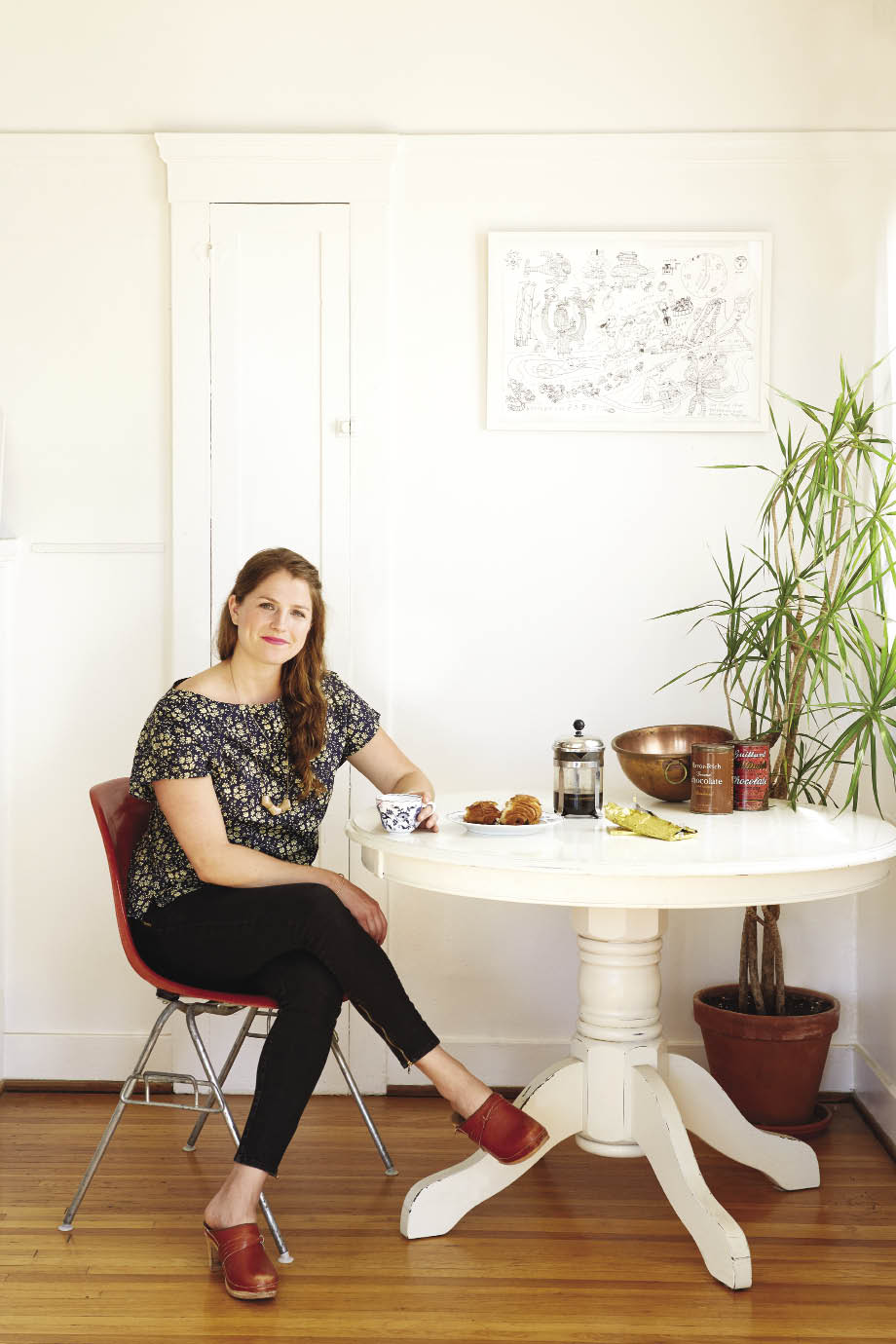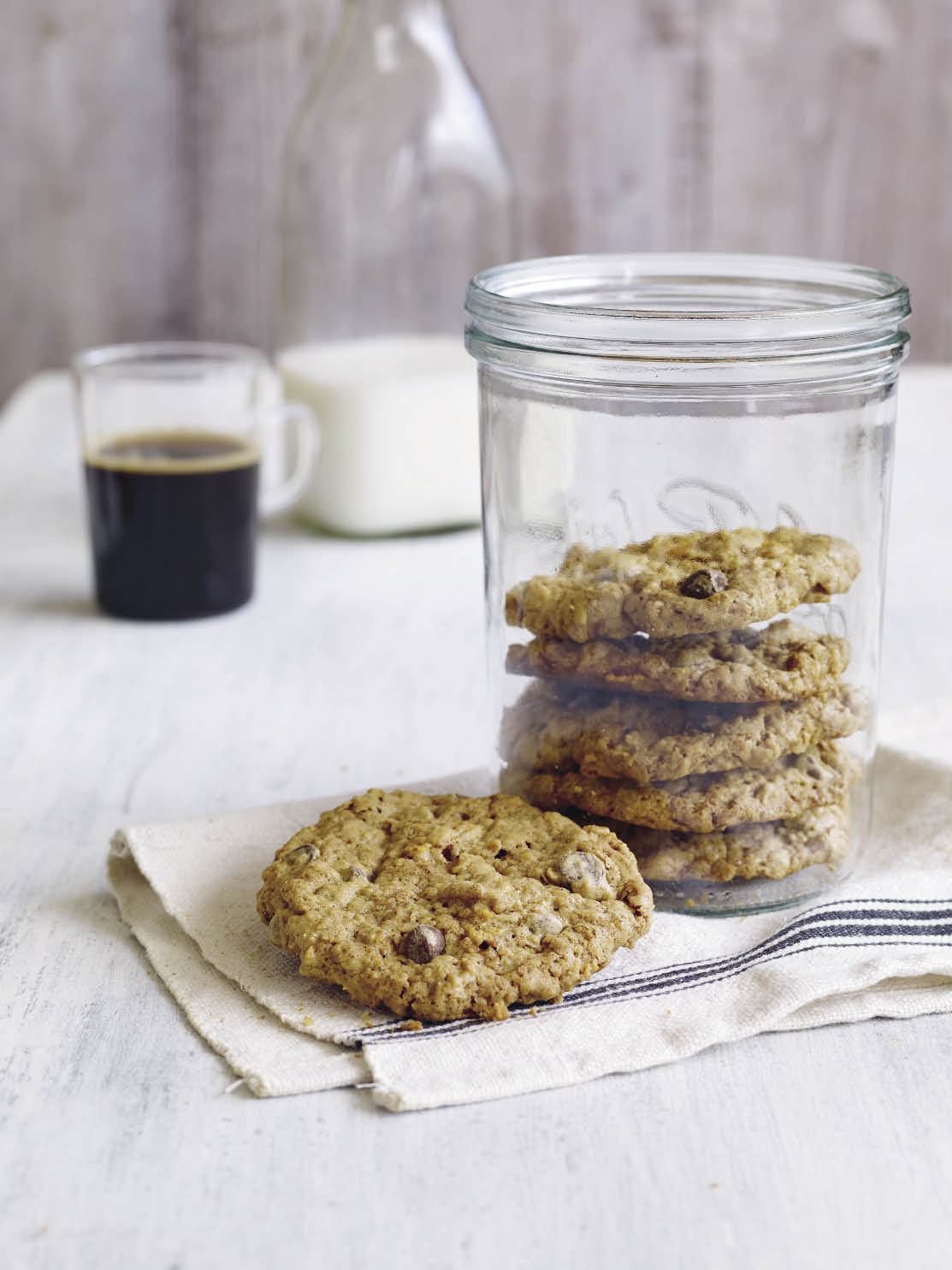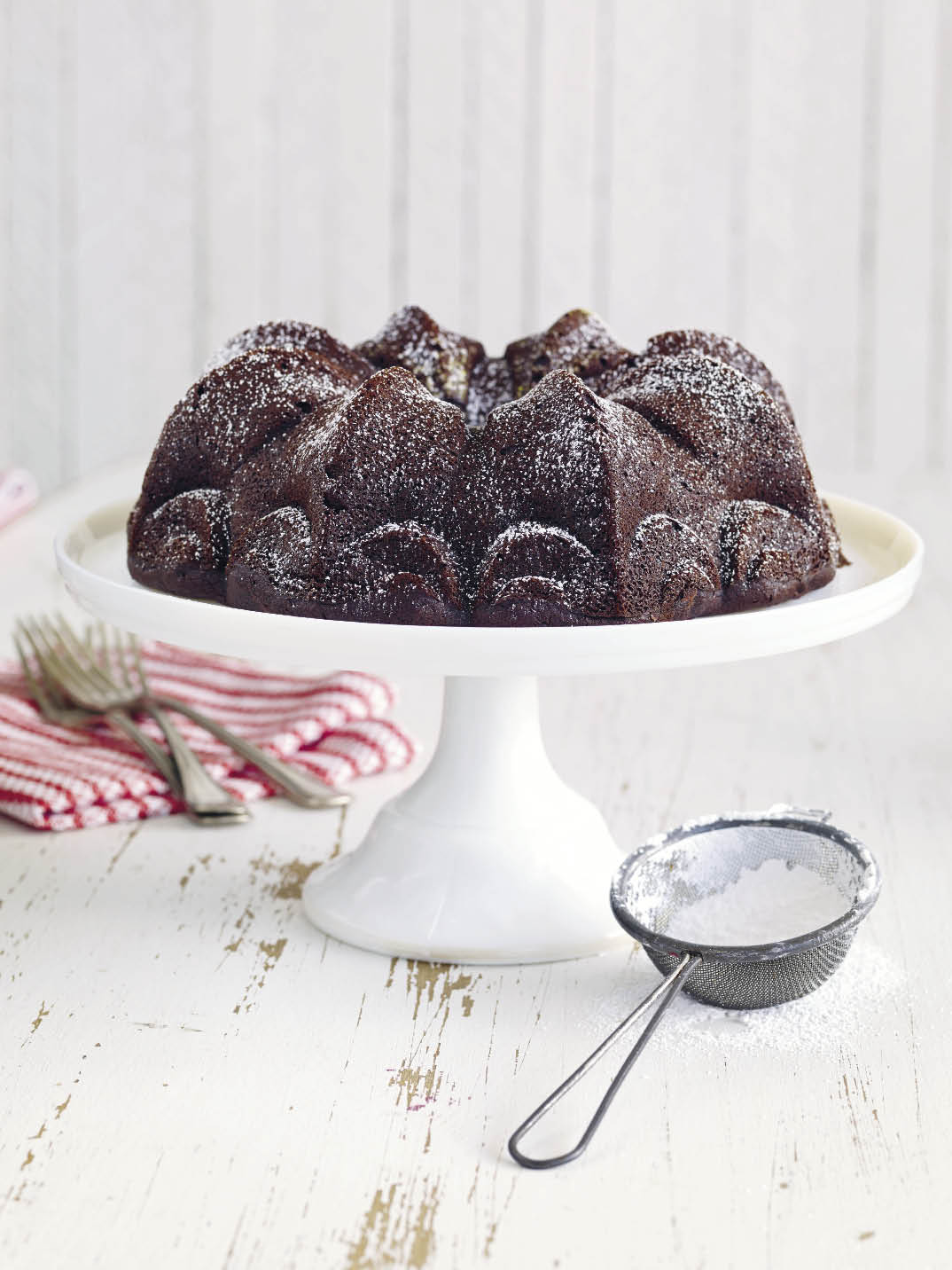Amy Guittard ’05 mentions a favorite family saying: Taste has memory. “Your memories of growing up oftentimes are associated with flavors and foods,” she explains. Her family’s chocolate-making business, the Guittard Chocolate Co., is based in San Francisco, and her favorite childhood memories revolve around chocolate. The Guittards have been turning cocoa beans into this ambrosia for home bakers, pastry chefs, and candy makers for 150 years; the company is America’s oldest continuously family-run chocolate producer.

Guittard, 32, oversees marketing at the company, which was founded by her great-great-grandfather, Etienne. He arrived in Northern California from France during the Gold Rush, hoping to sell a stash of chocolate and buy mining equipment. He soon discovered he could make more money selling chocolate to miners than he could prospecting, and set up his first chocolate shop in downtown San Francisco.
Today, most of the business is wholesale: Guittard custom-blends chocolates for global retailers such as Williams-Sonoma, or produces 10-pound bars for specialty shops and chefs at top restaurants. Production is based at a factory in Burlingame, south of San Francisco. But consumers can buy Guittard’s cocoas, chocolate chips, and chocolate bars in a range of flavors, from silky smooth milk chocolate to bittersweet, to spicy dark chocolate. “We’re kind of San Francisco’s little-known secret,” says Guittard.
Chocolate-making is both science and art, she explains. The chocolate flavor we experience doesn’t just come from its texture and smell; it also comes from our memories of the people, places, and times when we enjoyed eating it. “My first chocolate memory was when my dad would come home from the factory and smell like chocolate,” she says. Others include watching her older brother make what he called “Cloud Nine” brownies before she was old enough to cook, and drinking hot chocolate with her dad at Giants baseball games in notoriously windy Candlestick Park.
She shares all these stories and others, along with her family’s recipes, in her new cookbook: The Guittard Chocolate Cookbook: Decadent Recipes from San Francisco’s Premium Bean-to-Bar Chocolate Company (Chronicle Books, 2015). An English and anthropology major, Guittard took a creative writing class in her sophomore year at Barnard with Peggy Ellsberg, senior lecturer in English, and resolved to write the book that following summer, but confesses she spent more time surfing in Southern California than writing.
Guittard joined the family business about three-and-a-half years ago, when a marketing position became available. One day she was walking through the office of the company’s president, her father Gary, and spotted her great-great-grandfather’s handwritten recipe book. “I’m a pen-and-paper girl, and [this was] beautiful calligraphy,” she says. “At that moment, I thought: what if I took the same premise of this book, which was capturing our formulas, and translated that to a recipe book telling the stories of our family?”
About two years later, she was talking to a standing-room only crowd at a small specialty cookbook store in San Francisco’s Noe Valley about her recipes and her family’s passion for making chocolate. The audience asked as many questions about the business and politics of chocolate as they did about the proper amount of fat in ganache. One woman asked, “Do cocoa farmers know what chocolate tastes like? Because I saw a film a few years ago, and farmers had no idea what these beans were going to be in the end.” Guittard, the company’s first full-time female executive, had no trouble explaining from personal experience how cocoa beans grown primarily on small family farms around the world become fine chocolate. She travels the globe meeting with farmers to learn more about the best ways to grow and harvest cocoa beans and talking about chocolate’s flavor.
She’s often surprised when farmers don’t know that cocoa beans grown in different regions have different flavors. “And we say, ‘Hey, you should own and celebrate your beans and your farm and your blend because that’s unique to you.’ ” Her feedback is occasionally unwelcome, particularly if it’s critical; but most of the time, she says, small farmers enjoy the exchange of information.
Cocoa farming is one of the few agricultural industries still dominated by small family farms, adds Guittard. Eighty percent of the world’s cocoa beans are grown on farms of just 10 acres or less, and most of the beans are grown in Africa, where support and resources for farmers are typically limited.
Big chocolate companies are encouraging cocoa farmers to plant higher-yield trees to meet the growing global demand for chocolate. But small chocolate producers like Guittard want cocoa famers to celebrate the uniqueness and flavor of the beans they already grow because beans from higher-yield trees just aren’t as flavorful.
“You’re a farmer, you want highly productive trees, so of course you’re going to plant this other tree,” she says. “But it’s that notion of incremental degradation. Slowly but surely things change, and you don’t realize it until it’s too late.”
Guittard is helping set up so-called flavor labs in Africa, where local farmers can better understand and taste the nuances of cocoa beans, and learn how and why beans that are grown on trees just miles apart can taste completely different.
Guittard may be a small company with only about 150 employees, but “we play with the big guys,” Amy says. “I sit around the table talking with sustainability people from all over the world.” She’s particularly proud of her recent appointment as a mentor for Spring Accelerator, an organization that aids small business in East Africa serving adolescent girls.
Back in the Bay Area, Guittard, who also has master’s degree in business administration from California College of the Arts, has been busy revamping and synchronizing Guittard’s various brands and relaunching its logo. “I was brand new, and a little bit worried I was pulling the rug out from under everyone,” she says. “But I was really trying to get us back to telling our story as it was meant to be told. We’re a very innovative company.”
Even though she spends most of her time thinking and talking about the business of chocolate, Guittard hasn’t lost of her love of baking, which began as a child with her first Easy-Bake Oven. She still enjoys the simple pleasure of cracking an egg into a bowl of chocolate, and brings pumpkin chocolate-chip cookies to just about every party she attends. When Guittard recently asked a friend who’d just had a baby what she could bring her, the friend requested five batches of pumpkin chocolate-chip cookies, with several batches unbaked and freezable. “I stuck a bunch of dough in a Tupperware container and gave it to her, and she couldn’t have been happier,” Amy says. “I love creating more of those moments for myself and other people who love chocolate too.”
SIERRA NUGGETS
I like these hearty cookies in part because they remind me of the people who flooded into California in the 1800s in search of gold, including my great-great-grandfather Etienne. These nuggets are packed full of energy-sustaining ingredients—nuts, cornflakes, oats, and coconut—as well as
a variety of fragrant spices. They make for an unexpectedly delicious treat. Eureka!
 1½ cups [180 g] all-purpose flour
1½ cups [180 g] all-purpose flour
1¼ tsp baking soda
1 tsp salt
1½ tsp ground cinnamon
½ tsp ground mace
¼ tsp ground nutmeg
⅛ tsp ground cloves
1 cup [110 g] unsalted butter, at room temperature
1½ cups [300 g] granulated sugar
1 cup [200 g] firmly packed dark brown sugar
3 Tbsp whole milk
1½ tsp vanilla extract
2 large eggs, lightly beaten
1 cup [25 g] cornflakes
3 cups [240 g] old-fashioned rolled oats
1 cup [90 g] unsweetened shredded coconut
2 cups [340 g] Guittard Milk Chocolate Baking Chips or Guittard Semisweet Chocolate Baking Chips
1 cup [110 g] pine nuts, peanuts, or chopped walnuts
Preheat the oven to 350ºF [180ºC]. Line two baking sheets with parchment paper. In a medium bowl, combine the flour, baking soda, salt, cinnamon, mace, nutmeg, and cloves. Set aside.
In a large bowl, using a hand mixer, beat together the butter, granulated sugar, and brown sugar until smooth. Beat in the milk, vanilla, and eggs until well combined. One item at a time, stir in the cornflakes, oats, flour mixture, coconut, chocolate chips, and nuts until each addition is just incorporated. Drop the dough by well-rounded teaspoonsful onto the prepared baking sheets about 1 in [2.5 cm] apart.
Bake for 9 to 11 minutes, or until the tops are crisp. Let the cookies sit for 2 minutes before removing them from the baking sheets. Store in an airtight container at room temperature for up to 1 week.
MAKES FORTY-EIGHT 2IN [5CM] COOKIES
CHOCOLATE PERSIMMON CAKE
This persimmon cake recipe might be the oldest recipe in the book. It was created in the 1890s by someone on my paternal grandmother’s side of the family. It’s a gem of a recipe that can add a little excitement to a brunch spread or star on the dessert table when baked in a Bundt pan. Even people who aren’t familiar with persimmons love this cake. For one reason or another, the cake vanished from our Christmas Eve table for years until recently, when my uncle Hoddy and cousin Jennifer took it upon themselves to bring it back—not an easy task, given that my granny never wrote down the complete recipe. They worked in the kitchen until they were able to duplicate the cake, and now once again it takes pride of place at the holiday table. The recipe includes both cocoa powder and bittersweet chocolate for a silky, fudgelike texture. To get the freshest persimmon pulp, choose fresh, ripe Hachiya persimmons that are extra soft. While the traditional method calls for steaming this cake, we’ve simplified the recipe so it can be baked in the oven. If persimmons are out of season, substitute 1½ cups [365 g] pumpkin purée.
 ½ cup [60 g] all-purpose flour
½ cup [60 g] all-purpose flour
½ cup [60 g] whole-wheat flour
6 Tbsp [30 g] Guittard Cocoa Rouge (Dutch-processed unsweetened cocoa powder)
2 tsp baking soda
½ tsp salt
1 tsp ground cinnamon
½ tsp ground cloves
½ cup [110 g] unsalted butter, at room temperature
½ cup [100 g] granulated sugar
½ cup [100 g] firmly packed light brown sugar
2 large eggs
½ cup [120 ml] full-fat plain yogurt
1½ cups [400 g] persimmon pulp
½ cup [170 g] Guittard Extra Dark Chocolate Baking Chips
Preheat the oven to 375°F [190°C].
Lightly butter a 6-cup [1.4-L] Bundt pan or cut a 9in [23cm] piece of parchment paper, lightly butter it, then lay it, butter-side up, inside a 9-by-5-by-3-in [23-by-12-by-7.5-cm] loaf pan, leaving the extra parchment sticking out the sides; the parchment will not cover the two 5in [12cm] ends.
In a medium bowl, combine the all-purpose flour, whole-wheat flour, cocoa powder, baking soda, salt, cinnamon, and cloves. Set aside.
In a large bowl, with a hand mixer, beat together the butter, granulated sugar, and brown sugar until light and smooth, about 3 minutes. Add the eggs, one at a time, and the yogurt and mix after each addition until smooth. Add the persimmon pulp and the flour mixture, alternating between the two, in four parts, mixing after each part until well combined. Fold in the chocolate chips. Pour the batter into the prepared pan.
Bake for 1 hour, or until a toothpick inserted into the center comes out clean. Let the cake sit on a wire rack for 10 minutes to cool. Invert a second wire rack over the top of the cake. Using both hands, flip the cake and rack so the pan is upside down on the rack. Gently shake the pan to release the cake onto the rack. Flip the cake back over so it is right-side up. Allow to cool completely, 2 to 4 hours, then wrap tightly in plastic wrap. (The cake is best served the morning after you make it.) Store wrapped tightly in plastic wrap at room temperature for up to 5 days, or in the freezer for up to 2 months. To defrost, move the wrapped cake to the refrigerator overnight. Reheat in a 350°F [180°C] oven for 5 to 10 minutes or until heated through.
MAKES ONE 6-CUP [1.4-L] BUNDT CAKE OR ONE 9-BY-5IN [23-BY-12CM] LOAF
